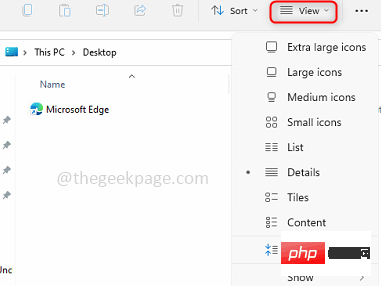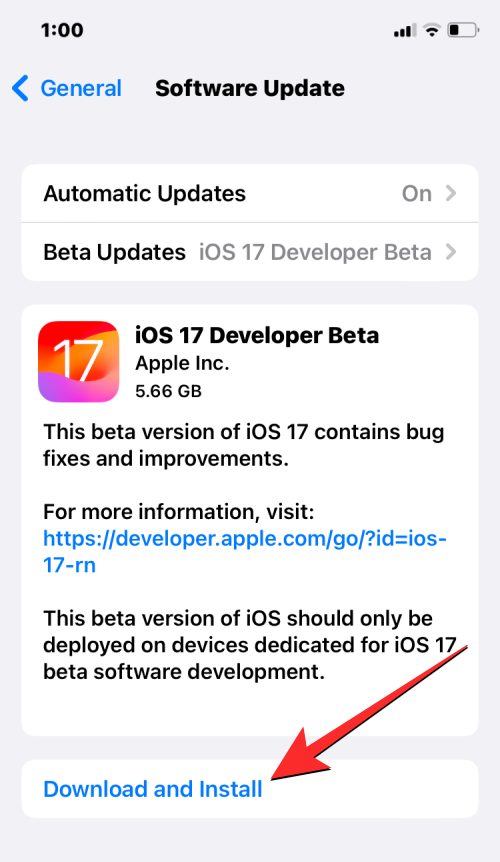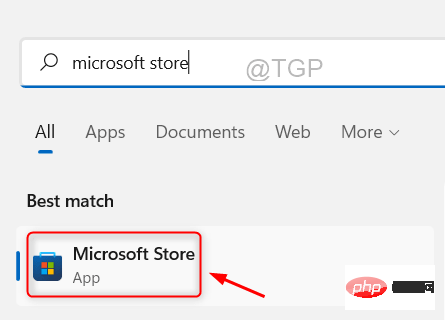This article mainly introduces you to the relevant content about setting the setTimeout time to 0. setTimeout() is a method belonging to window, but we all omit the top-level container name of window, which is used to set a time. When it arrives, a specified method will be executed. The following article mainly introduces you to the relevant information about setting the setTimeout time to 0. Friends in need can refer to it.
1. Appetizer, what is setTimeout
First look at the explanation of setTimeout on w3school
setTimeout(fn,millisec) method is used to call a function or calculated expression after a specified number of milliseconds.
It’s very simple, setTimeout() Only execute fn once, when it is executed depends on the number of milliseconds set by the second parameter millisec, so many people are used to it It is called delay, which is nothing more than delaying for a period of time before executing the code inside.
setTimeout(function(){
console.log('我是setTimeout');
}, 1000);Under normal circumstances, I am setTimeout. This sentence will not be output immediately but will be output in the browser console after 1000 milliseconds.
2. Main dish, js is single-threaded
OK, let’s look at an example. What is the output of this example? ?
setTimeout(function(){
console.log(1);
}, 0);
console.log(2);
console.log(3);To the surprise of some people, the results were 2, 3, 1. This doesn't seem to follow the routine. It obviously waits for 0 milliseconds, that is, it outputs directly without waiting. Why is 1 output at the end?
This requires clarification of a very important concept: js is single-threaded. Single-threading means that all tasks need to be queued, and the next task will not be executed until the previous task is completed. If the previous task takes a long time, the next task will have to wait.
In fact, it’s easy to understand. Just like when everyone goes to the supermarket to buy things, everyone who buys things needs to line up at the checkout counter to check out. Under normal circumstances, each checkout counter can only serve one person at a time. The customer checks out. Only after this customer checks out can the next customer be served.
The kernel of the browser is multi-threaded. They cooperate with each other under the control of the kernel to maintain synchronization. A browser implements at least three resident threads: javascript engine thread, GUI rendering thread, and browser events. Trigger thread.
The JavaScript engine is based on event-driven single-thread execution. The JS engine has been waiting for the arrival of tasks in the task queue and then processed them. The browser has only one JS thread at any time. Run JS program.
The GUI rendering thread is responsible for rendering the browser interface. This thread will be executed when the interface needs to be repainted (Repaint) or when a reflow (reflow) is caused by some operation. However, it should be noted that the GUI rendering thread and the JS engine are mutually exclusive. When the JS engine is executed, the GUI thread will be suspended, and GUI updates will be saved in a queue and executed immediately when the JS engine is idle.
Event trigger thread. When an event is triggered, the thread will add the event to the end of the pending queue and wait for processing by the JS engine. These events can come from the code block currently executed by the JavaScript engine such as setTimeOut, or from other threads in the browser kernel such as mouse clicks, AJAX asynchronous requests, etc. However, due to the single-threaded relationship of JS, all these events have to be queued for processing by the JS engine. (Asynchronous code will be executed when no synchronous code is executed in the thread)
In fact, when js code execution encounters setTimeout(fn,millisec) , the fn function will be placed in the task queue. When the js engine thread is idle and reaches the time specified by millisec, fn will be placed in the js engine thread for execution.
setTimeout(fn,0) means to specify a task to be executed in the earliest available idle time of the main thread, that is, to be executed as early as possible. It adds an event at the end of the "task queue", so it will not be executed until the synchronization task and the existing events in the "task queue" have been processed.
HTML5 standard stipulates that the minimum value (shortest interval) of the second parameter of setTimeout() shall not be less than 4 milliseconds. If it is lower than this value, it will automatically increase. Prior to this, older browsers set the minimum interval to 10 milliseconds. In addition, those DOM changes (especially those involving page re-rendering) are usually not executed immediately, but every 16 milliseconds. At this time, the effect of using requestAnimationFrame() is better than setTimeout() .
It should be noted that setTimeout() only inserts the event into the "task queue". The main thread must wait until the current code (execution stack) is finished executing before the main thread executes the specified task. Callback. If the current code takes a long time, you may have to wait for a long time, so there is no way to guarantee that the callback function will be executed at the time specified by setTimeout().
3. Dessert, the wonderful uses of setTimeout
In fact, setTimeout has some wonderful uses, here are a few.
Function debounce
让一个函数在一定间隔内没有被调用时,才开始执行被调用方法。比如当你在使用 google 搜索内容的时候,有些关键词输入到一半,谷歌会展示一个可选列表,根据你当前输入的内容作出的一个猜测联想。需要监听文字改变,每一次改变都会调用一次回调函数,现在需要的一种实现是在用户停止键盘事件一段时间后,去发送一个请求。
var debounce = function(method, context) {
clearTimeout(method.tId);
method.tId = setTimeout(function(){
method.call(context);
},100);
}轮训任务
js中可以使用setInterval开启轮询,但是这种存在一个问题就是执行间隔往往就不是你希望的间隔时间。
比如有个轮询任务间隔是100ms,但是执行方法的时间需要450ms,那么在200ms、300ms、400ms本来是计划中执行任务的时间,浏览器发现第一个还未执行完,那么就会放弃2、3、4次的任务执行,并且在500ms之后再次执行任务,这样的话,其实再次执行的间隔就只有50ms。使用setTimeout构造轮询能保证每次轮询的间隔。
setTimeout(function () {
console.log('我被调用了');
setTimeout(arguments.callee, 100);
}, 100);延迟js引擎的调用
var p = document.createElement('p');
p.innerHTML = '我是一个p';
p.setAttribute('style', 'width:200px; height:200px;background-color:#f00; ');
document.body.appendChild(p);
setTimeout(function() {
console.log('我被调用了');
}, 1000);虽然setTimeout有一些妙用,但是他确实是在宏观任务队列中新增任务了,所以万万不能滥用啊。
相关推荐:
javascript函数setTimeout带参数用法实例详解
The above is the detailed content of How setTimeout sets time to 0. For more information, please follow other related articles on the PHP Chinese website!
 如何调整Win10文件夹字体大小?Jun 30, 2023 pm 08:02 PM
如何调整Win10文件夹字体大小?Jun 30, 2023 pm 08:02 PMwin10电脑文件夹字体大小怎么设置?win10文件夹字体大小设置方法是首先点击左下角开始,然后选择打开设置。很多小伙伴不知道怎操作,小编下面整理了文件夹字体大小设置方法步骤,如果你感兴趣的话,跟着小编一起往下看看吧!文件夹字体大小设置方法步骤1、首先点击左下角开始,然后选择打开设置。2、之后去点击“系统”。3、点击左侧的“屏幕”。4、在右边找到“更改文本、应用等项目的大小”。5、最后点击下拉,选择100%即可。以上就是【win10电脑文件夹字体大小怎么设置-文件夹字体大小设置方法步骤】全部内容
 怎样设置win11电池充电上限Jul 01, 2023 pm 10:41 PM
怎样设置win11电池充电上限Jul 01, 2023 pm 10:41 PM怎样设置win11电池充电上限?用户想知道win11电脑中要怎么去设置电池充电上限呢,如果使用的是win11联想电脑,就打开电脑上的电脑管家,然后点击电池充电图标,点击更改电池阈值即可设置啦,若是华为win11电脑,就打开myasus软件,点击电池健康充电选项,选择保养模式即可开始设置电源充电上限啦,不会的话,小编下面整理了win11设置电池充电上限教程,一起往下看看吧!win11设置电池充电上限教程1、联想电脑需要先下载安装联想电脑管家2、打开它,点击底部的电池充电图标,点击上方的更改电池阈值
 如何为所有文件夹在Windows 11中设置相同的文件夹视图?Apr 26, 2023 pm 10:31 PM
如何为所有文件夹在Windows 11中设置相同的文件夹视图?Apr 26, 2023 pm 10:31 PM在Windows中,我们可以在文件资源管理器中查看文件夹、文件和其他文档。您可能已经观察到,很少有文件和文件夹具有较小的图标,而很少有较大的图标。因此可以理解,有一个定制选项可用。根据文件的性质,默认设置了不同的文件夹模板。例如,在包含照片的名为Picture的文件夹中,图像具有不同的视图。包含音乐文件的音乐文件夹将具有不同的模板。同样,对于文档、视频等文件夹,每个文件夹根据其类别包含不同的模板。您还可以选择文件夹的模板并将其设置为所有其他相同类型的文件夹。在本文中,我们将学习如何将文件夹视图应
 Win10分屏指南:如何设置分屏显示Jun 29, 2023 pm 10:37 PM
Win10分屏指南:如何设置分屏显示Jun 29, 2023 pm 10:37 PMwin10如何分屏操作?Win10系统中内置一个多窗口分屏功能,而这个功能很实用,不过有很多用户其实不知道要如何去为电脑进行分屏,其实实际操作起来还是非常简单的,下面就跟着小编一起来看看Win10设置分屏显示的方法,有需要的用户可不要错过。Win10设置分屏显示的指南第1步:同时单击(Windows键+I)打开Windows设置,或者您也可以单击Windows开始按钮,然后单击设置。第2步:单击系统并在左侧窗格中向下滚动,直到看到多任务处理选项。单击多任务处理。第3步:在右侧窗格中,通过单击切换
 如何在 iPhone 上使用多计时器与 iOS 17Jun 21, 2023 am 08:18 AM
如何在 iPhone 上使用多计时器与 iOS 17Jun 21, 2023 am 08:18 AM什么是iOS17上的多计时器?在iOS17中,Apple现在为用户提供了在iPhone上一次设置多个计时器的能力。这是一个可喜的变化,许多人多年来一直期待的变化。时钟应用程序在iOS16之前只允许用户一次设置一个计时器,现在可用于激活任意数量的计时器,使其成为您一次完成多个任务的理想选择。您可以在计时器屏幕中设置任意数量的计时器。启动计时器后,所有活动计时器都将在锁屏界面和通知中心显示为“实时活动”通知。从这里,您可以查看计时器关闭、暂停或停止计时器的剩余时间,而无需打开时钟应用程序。当您在时钟
![如何为您的 Windows lComputer 设置首选频段 [2023]](https://img.php.cn/upload/article/000/465/014/168773917841923.png) 如何为您的 Windows lComputer 设置首选频段 [2023]Jun 26, 2023 am 08:26 AM
如何为您的 Windows lComputer 设置首选频段 [2023]Jun 26, 2023 am 08:26 AM几乎所有最新品牌的笔记本电脑都配备了双品牌WiFi。您可以将WiFi设置为5GHz或2.4GHz带宽。但是,事情并没有那么简单。笔记本电脑上的此功能很好地隐藏在设备管理器中,您无法从“设置”页面执行此操作。按照我们的指南为您的笔记本电脑、PC设置首选频段。注意–要切换到5GHz带宽WiFi,您需要WiFi路由器和设备都支持双频WiFi。如果它们中的任何一个都没有支持,则无法更改WiFi带宽。如何在设备上设置首选的WiFi频段设置首选频段以充分利用您的WiFi非常容易。方式1–设置首选频段步骤1–
 Win10专业版的鼠标dpi数值如何设置Jun 29, 2023 pm 02:08 PM
Win10专业版的鼠标dpi数值如何设置Jun 29, 2023 pm 02:08 PMWin10专业版的鼠标dpi数值如何设置?鼠标是常用办公硬件之一,我们通常需要对鼠标的灵敏度进行调节,调整到合适我们使用的数值,不过很多用户对鼠标dpi比较陌生,不知鼠标dpi在哪里调,要怎么调,很多小伙伴不知道怎么详细操作,小编下面整理了Win10调鼠标dpi的技巧,如果你感兴趣的话,跟着小编一起往下看看吧! Win10调鼠标dpi的技巧 1、进入Windows设置选择打开备 2、左侧的选项栏切换到鼠标,在右侧的相关设置下选择他鼠标选项 3、在鼠标属性口将上方选项卡切换到针选项在下方的
 如何在 Windows 11 上快速设置动态壁纸Apr 25, 2023 pm 02:13 PM
如何在 Windows 11 上快速设置动态壁纸Apr 25, 2023 pm 02:13 PM桌面屏幕上的壁纸是系统启动后最令人兴奋和最引人注目的功能之一。它对人们产生有利的影响,并鼓励他们在感到快乐的同时提高工作效率。另一方面,更换壁纸并定期寻找它是一项耗时的任务。那么,如果你的桌面屏幕有一个动态的动态壁纸,可以让你看到各种轻松的壁纸,那不是很好吗?这也将允许用户下载任何GIF并将其设置为系统上的壁纸。在这篇文章中,我们将教您如何使用MicrosoftStore在您的PC上创建或获取动态壁纸。如何使用MicrosoftStore在Windows11上快速设置或获取动态壁


Hot AI Tools

Undresser.AI Undress
AI-powered app for creating realistic nude photos

AI Clothes Remover
Online AI tool for removing clothes from photos.

Undress AI Tool
Undress images for free

Clothoff.io
AI clothes remover

AI Hentai Generator
Generate AI Hentai for free.

Hot Article

Hot Tools

Dreamweaver CS6
Visual web development tools

DVWA
Damn Vulnerable Web App (DVWA) is a PHP/MySQL web application that is very vulnerable. Its main goals are to be an aid for security professionals to test their skills and tools in a legal environment, to help web developers better understand the process of securing web applications, and to help teachers/students teach/learn in a classroom environment Web application security. The goal of DVWA is to practice some of the most common web vulnerabilities through a simple and straightforward interface, with varying degrees of difficulty. Please note that this software

WebStorm Mac version
Useful JavaScript development tools

Atom editor mac version download
The most popular open source editor

MinGW - Minimalist GNU for Windows
This project is in the process of being migrated to osdn.net/projects/mingw, you can continue to follow us there. MinGW: A native Windows port of the GNU Compiler Collection (GCC), freely distributable import libraries and header files for building native Windows applications; includes extensions to the MSVC runtime to support C99 functionality. All MinGW software can run on 64-bit Windows platforms.






